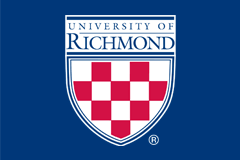Article Title
Abstract
Joseph Schumpeter, the Austrian born economist and social historian who spent a major part of his academic career at Harvard, was a cogent observer of how societies develop. His Capitalism, Socialism, and Democracy is still considered a classic. Schumpeter spoke of "perennial gales of creative destruction" (often technological) that shock societies and force change. The advent of electricity and the coming of the automobile illustrate technologies that created new power arrangements and destroyed or modified existing institutions. Higher education is now in the midst of a Schumpeterian "gale of creative destruction"--a revolution, many say. After almost 150 years of reliance upon a model of higher education that was borrowed substantially from the Germans and the British, a fundamentally new model is developing. The old model has been based upon staples such as courses, credit hours, 50 minute lectures, Monday through Friday course schedules, and semesters. In many of its incarnations, it has been supplemented with fraternities, football teams, and a variety of other social activities that occur on a "home" campus that usually features many youthful students who reside on or near that campus. Traditionally, the colleges and universities operating in this framework have functioned as self-contained small towns in the sense that they provide their own housing, food, entertainment, transportation, and the like. And, the institutions that have become household names for one reason or another such as Harvard, Michigan, Florida State, and the University of Nevada at Las Vegas have largely operated on a non-profit basis such that the attendance of an individual student has been highly subsidized by nonstudents. With respect to academic work per se, the predominant paradigm has been termed the "teaching model" because it has emphasized students "coming to the information" by attending approximately 45 lectures delivered by faculty at an appointed time and place on a home campus during a semester. All of this occurs in virtual lockstep and rare is the student who breaks away from the usual cadence. Examinations are given at the end of the semester; two semesters make one academic year; and, four years of such activity translate into a bachelor's degree.
Recommended Citation
James V. Koch,
The Revolution in Higher Education,
3
Rich. J.L. & Pub. Int.
145
(1998).
Available at:
https://scholarship.richmond.edu/jolpi/vol3/iss2/4

